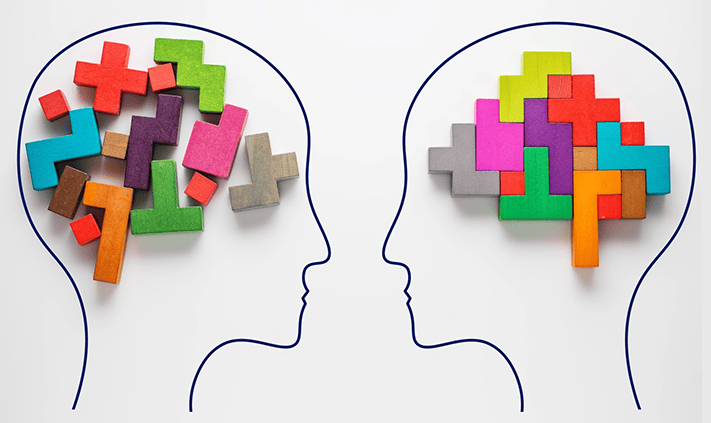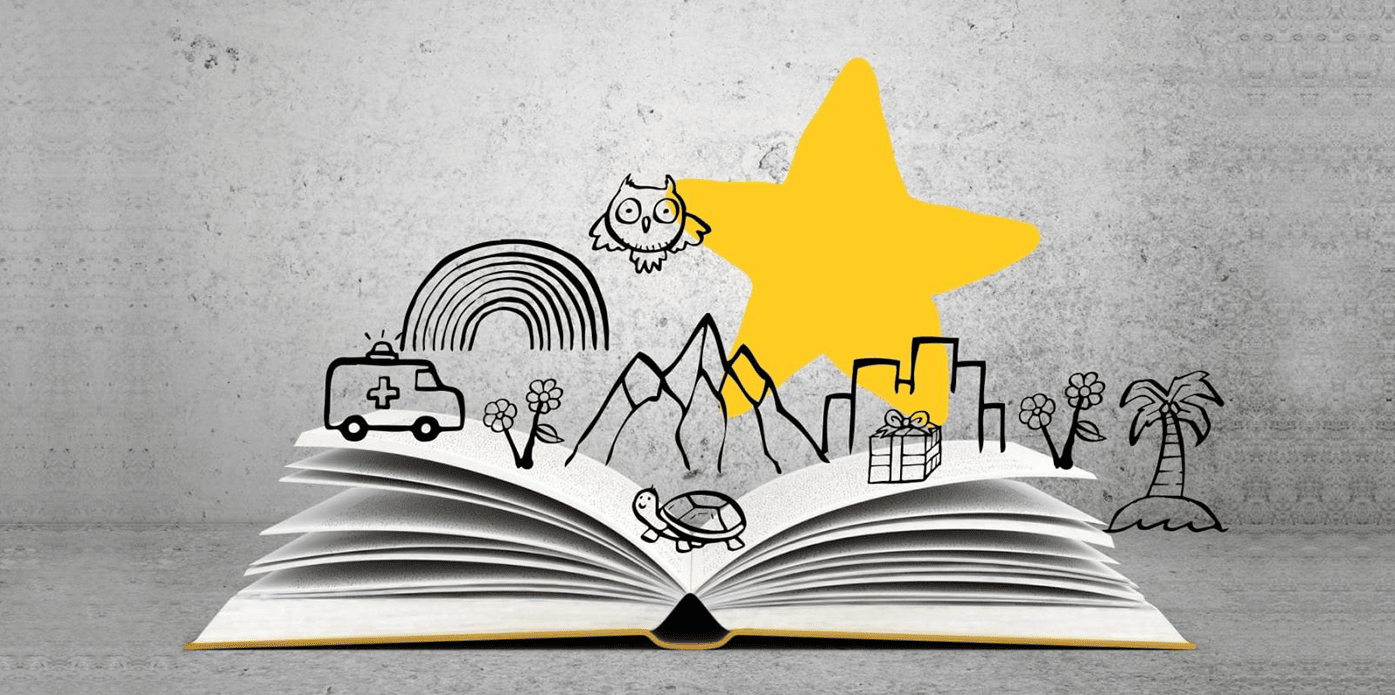In a world increasingly filled with white noise and information overload, the most powerful form of communication we have at our disposal is storytelling. Ever since the birth of civilisation, the art and act of storytelling have been instrumental in shaping cultures and creating mythologies. It is the simplest, most memorable device we have for engaging, learning, entertaining and persuading the audience into suspending their cynicism in order to ‘buy into’ an emotion or point of view.
Not long ago, we heard stories from our grandparents that began with, “Once upon a time there lived a……” or looked forward to reading storybooks that opened with the characteristic line, “It was a dark and stormy night”. We even had a spring in our step when settling down in our theatre seats as the opening credits rolled out to the tune of the introduction music on the silver screen.
Not any longer.
As the world around us changes and as markets, technologies and consumers transform in ways unimaginable a few years ago, stories are going to matter more than ever in mapping out the way that leads us to a more successful and effective future.
The rise in the number of Digital Natives and participative cohorts coupled with rapid technological progress has unlocked newer formats of storytelling. New opportunities are getting created by the minute for interactive, immersive storytelling whether via new virtual reality spaces like the metaverse or storytelling tools such as podcasts, virtual production, collaborative interactive events, VR, AR, gaming technology and NFTs. Telling stories in an immersive environment helps create multi-sensory, hands-on interaction which can be easier to identify with, more memorable and ultimately more effective. The list of innovations goes on and on.
Some brands are already exploring these opportunities by placing the viewer at the centre of their stories. Avatars, a virtual embodiment of our physical selves, are viewed as the "first mega opportunity" for brands owing to the seemingly endless opportunities to clothe, style and feed them. Almost every product that is marketed to humans can be sold to their virtual counterparts provided there’s a good story-based idea to back these efforts.
However, it is important to understand why and how stories work. Stories in any format require great characters, plot, conflict and resolution. The best stories allow the audience to participate, to engage and allow themselves to become immersed in the emotions invoked by the narrative. It is always tempting for a brand to try to persuade rather than simply narrate but this ultimately detracts from their potential to communicate.

Let’s distil FIVE key insights that can be leveraged to enhance the impact of storytelling for building brands.
1. Storytelling is the secret sauce behind a significant section of global award-winning campaigns when it comes to effectiveness.
Every good story has character, plot and resolution. It mirrors the experiences and emotions of the audience in order to engage them. Likewise, award-winning campaigns are nothing but highly engaging brand stories that are sharply focused on the product benefits. Using a powerful combination of story and music, these campaigns bring alive the brand vision and steer fulfilment of user aspirations.
This kind of effectiveness is not just restricted to those created for conventional media like TV and Radio. TEST RESULTS WHERE ONLINE WAS THE DOMINANT VIDEO CHANNEL also corroborate that ‘right-brained’ ad campaigns tend to generate more attention, emotional response and recall.
Perspective Inspiration: https://system1group.com/blog/5-points-orlando-wood-achtung
Digging deeper, the most important parts of creatives that constitute such campaigns are the beginning (the hook) and the impactful ending that would make the consumers try the product or service. Says the legendary adguru Sir John Hegarty, whatever you do, you must leave room for the audience to participate. You have to get them engaged in the process – that way you’ll get them wanting more.
But at the heart of any effective storytelling, there should be an idea - original, big, and disruptive; one that meets the brand objective and thereby drives effectiveness.
2. Move over random data points - well-presented facts and numbers can create compelling, action-inspiring stories.
During a 2009 interview, Google’s Chief Economist Dr. Hal R.Varian stated, "The ability to take data—to be able to understand it, to process it, to extract value from it, to visualize it, to communicate it—that’s going to be a hugely important skill in the next decades.
Perspective Inspiration: https://www.mckinsey.com/industries/technology-media-and-telecommunications/our-insights/hal-varian-on-how-the-web-challenges-managers
As we look through the rear-view mirror of our present context, that was indeed an astute assessment.
Contrarian as it may sound, facts, data, and infographics can be tightly woven to build a powerful narrative. As we have witnessed inside corporate boardrooms or observed in award-winning non-fiction docu-dramas, storytellers have captured our undivided attention by explaining the context with relevant data, choosing a set of key visuals for their bold proclamations and substantiating claims with a chosen set of killer numerical evidences to effectively create memorability, persuade, engage and finally build empathy with the audience.
Perspective Inspiration: https://www.forbes.com/sites/brentdykes/2016/03/31/data-storytelling-the-essential-data-science-skill-everyone-needs/?sh=2f9e9d5c52ad
Our brains can process an image in as little as 13 milliseconds, which equates to a speed of 75 frames per second. That’s why good stories show instead of tell
Perspective Inspiration: https://neuroleadership.com/your-brain-at-work/the-neuroscience-of-storytelling/
In the digital domain, it is possible for brands in search of social media buzz to take recourse to Social Media Data to illustrate the characters, plot and action within their data story so as to place themselves into dominant cultural themes and conversations and start a debate that would spread organically into every other channel.
Perspective Inspiration: https://www.collectivemeasures.com/insights/storytelling-with-social-media-data
3. Storytelling can favourably influence consumer demand that shoots up during festival seasons and prime occasions
Localisation and personalisation of story content built on the foundation of culturally nuanced, data-driven insights are key to influencing consumer demand during times of festive splurge. During every Diwali season in India, we are subjected to a plethora of long-format campaigns hinged on elaborate storytelling. To borrow an analogy from military warfare, brands use thematic storytelling as their air cover while tactical offers are deployed for carpet-bombing. Taking about the pull-factors, emotionally relevant narratives have the highest potential to create meaningful connections - a kind of a bridge between brand values and human values.
Sometimes, such theme-based story settings can be quite melancholic with an intention to break the clutter. But we have seen that most respondents warm up to those executions that show empathy and togetherness. With the product woven into the narrative, storytelling in the form of emotional engagement is a successful tool to address the festive madness.
However, good storytelling during big occasions is not a silver bullet to build long term equity. After the discounts end and seasonality disappears, brands should continue to play a meaningful role and stay authentic. Storytelling that inspires action is bound to reinforce existing brand equity and deliver long-term benefits.
4. Behind good storytelling lies the application of robust neuroscience.
Our brain makes sense of the world around us through stories. We do this by encoding the newest, most important and most relevant snapshots of these stories into our long-term memory, which is proven to correlate to future action, decision-making and behavioural change. When we experience an emotionally-charged event or hear a story of the same nature, certain parts of our brain release excess dopamine, making it easier to remember something with greater accuracy.
Perspective Link: https://neuroleadership.com/your-brain-at-work/the-neuroscience-of-storytelling/
Our brain is always receptive to following a clear and cohesive thread when it comes to the narrative. A lot of good storytelling falls within this prism of coherence, or the structural integrity of ideas wherein each added idea builds on and reinforces related concepts. Coherence helps us focus and cut through the noise. We know that right-brain memory processing also includes retrieval of familiar information and in most cases, the use of celebrities or micro-influencers (as the case may be) enhances familiarity. This familiarity, in turn, lowers subconscious barriers for the brand in the brain.
Perspective Link: https://neuroleadership.com/your-brain-at-work/the-neuroscience-of-storytelling/
On the other end of the brain-signal reception spectrum lies intrigue which is also a driver of memory. Intriguing stories can often be polarising, and any brand that attempts to drive significant cultural change by going against the brain's conditioned responses to any issue is seen to invoke storytelling through controversial campaigns.
Contextuality is key and neurosciences help us to understand that phenomenon. According to CONTEXT UNCUT REPORT prepared by Neuro-Insight in 2019, neuroscience demonstrates that the same ads stimulate very different brain responses, depending on where they are placed. Premium editorial contexts create stronger engagement, higher emotional intensity and greater long-term memory encoding, which is proven to correlate with decision-making and purchase behaviour.
Perspective Link: https://www.neuro-insight.com/wp-content/uploads/2019/11/Context_Uncut-Report-WebVersion.pdf
Neuroscience techniques are used in storytelling to perpetuate brand archetypes. Archetypes are age-old patterns present in the collective human unconscious – characters and storylines that are highly resonant across cultures. Successful brands have built brand stories on specific archetypes to tap into the unconscious, aided memory encoding and create mass appeal.
We must have witnessed a set of authors, singers, actors, sportspersons suddenly trending and becoming overnight social media sensations. Why so, we might ponder. The reason could well be the handiwork of an archetype-rich narrative deliberately crafted across social media. The plotline of their life stories are usually hinged on the theme of “overcoming the monster”.
Creative executions that deliver emotive and personally relevant signals are crucial drivers to stimulate memory encodings. Therefore, from an execution point of view, ads with one or two scenes and two or three main characters tend to perform best. Too many scenes and characters are difficult to process and cause disengagement. On the other hand, having only one character makes it difficult to show conflict.
5. Storytelling can be used for effective content marketing in the B2B arena.
The B2B context is a different kettle of fish. Here achieving cut-through in the proverbial “sea of sameness” marketplaces can be challenging and emit different signals to a diverse collection of stakeholders. Storytelling can serve the common agenda. By developing content which is string together by a series of engaging stories that resonates with the customer appeal, brands can look forward to increase engagement, and further their objectives.
Brands need to:
1) Identify a thematic platform
2) Pick and choose a few central characters and sharpen their characteristics.
3) Personalise the storyboards to mirror audience aspirations
4) Underline the moral of the story, and key take-aways
5) Finally, champion and reward a story-telling culture within the contours of business goals and ambitions.

In a hard-nosed, balance-sheet-led business environment, the word ‘story’ has a floaty, ‘touchy-feely’ air to it. But the impact of storytelling on business effectiveness is anything but floaty. Products perform functions. Stories can give those functions status and meaning. They can create value. Most importantly, stories can change the way we feel and about brands that we’d otherwise reject. Stories reveal the soul of a brand that no amount of marketing spends can.
In a work context, we can design employee meetings around story frameworks more than “check-ins” by asking more about solutions and less about problems. Having a two-way synchronous conversation increases reflection, raises a sense of primary relatedness in our brains, and builds connections.
Perspective Inspiration: https://neuroleadership.com/your-brain-at-work/the-neuroscience-of-storytelling/
With the advancement of neuroscience, we’ve become ever more aware of the power of emotions on human decision-making and purchase behaviour. We like to think of ourselves as rational beings, but in truth, we never have been. We’ve always been driven by our emotions. And stories, in effect, are mechanisms to stir emotions. They should be at the heart of any brand-building initiative so as to grab the attention of a more targeted audience.
HAPPY STORYTELLING!
Tathagata brings in over 25 years of work experience across Sales, Advertising and Marketing, with significant understanding of Automobile and Telecom categories. In AGL he is aiming at constructing new business strategies to maximize the marketplace potential, ensuring integrated storytelling based on data, insights and technology.






Leave a Comment